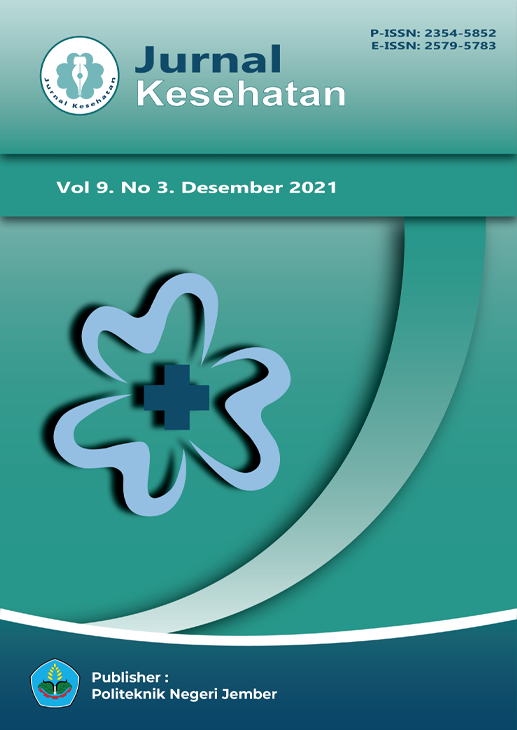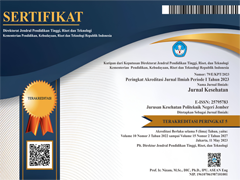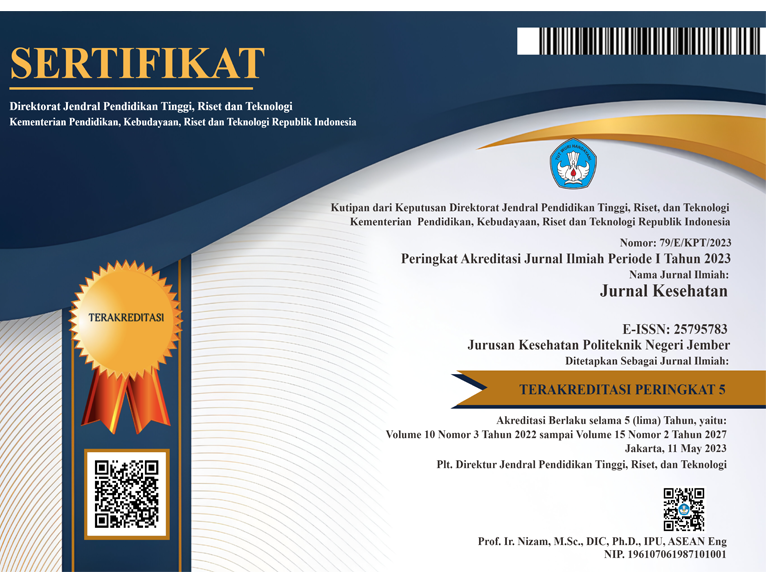Pengaruh Penambahan Telur terhadap Elastisitas dan Penerimaan Mi Basah Bebas Gluten
DOI:
10.25047/jkes.v9i3.228Downloads
Abstract
70% childern with autism have gastointestinal problem due to the low amount of enzymes that hydrolyzed casein and gluten. As a result, protein can not be completely hydrolyzed into amino acids but only peptides. These petides lead to opioid receptors that cause behavioral disoders. Glutein and casein free diet can be one of the therapies for the treatment of behaviors disorders. The aims of this study were to determine the effects of addition eggs to the changes of elasticity of wet noodles from composite flour (mocaf flour, mung bean flour and tapioca flour), to know the panelist’s acceptance and to determine the nutritional facts of these noodles. The study design used randomized block design (RAK) with one factor, that is the addition of 4,5,6,7, and 8 eggs. The composite flour used was mocaf flour, mung bean flour and tapioca flour. The results showed that the addition of eggs had an effect on the elasticity of the wet noodle products with values ranging from 0.12 to 0.28N. The addition of 6 eggs produces noodles with the highest yellow color intensity, the most savory taste, there is the aroma of mung beans and eggs and the most elastic texture. The addition of eggs also increased the panelists' preference for noodle products. One bowl of noodles with a weight of 250 g contributes 12% of daily energy, 28% of daily protein needs, 12% of daily fat needs and 8% of daily carbohydrate needs. Gluten-free wet noodles from composite flour (mocaf flour, mung bean flour and tapioca flour) can be a main food alternative for people with autsim on a gluten-free diet.
Keyword : autism, gluten free diet, noodles
License
Copyright (c) 2022 Jurnal Kesehatan

This work is licensed under a Creative Commons Attribution-ShareAlike 4.0 International License.
Authors who publish in this journal agree to the following terms:
1. Copyright belongs to the medical journal as a publication
2. The author retains copyright and grants the journal rights to the first publication carried out simultaneously under a Creative Commons Attribution License which allows others to share the work with an acknowledgment of the author's work and initial publication in this journal.
3. Authors may enter into separate additional contractual arrangements for the non-exclusive distribution of the work (eg sending it to an institutional repository or publishing it in a book) with acknowledgment of initial publication in this journal.
4. Authors are permitted and encouraged to post work online (eg in institutional repositories or on their websites) before and during the submission process, as before and larger citations of published work (see Effects of Open Access).
Selengkapnya tentang teks sumber ini














